
Voyage Tour Ecosse
Tout sur l'Écosse
Attraits Golf Activités

South Street St Andrews
South Street is where you will find St Mary's Quad
and the Gregory meridian. The oldest part of the University
and the town gate (west port). Madras College Blackfriars Chapel ruins, the Town Hall and many other historic sites.
Le port ouest
rue Sud Saint André Écosse
Le port ouest a été construit vers 1580 et est la seule porte d'accès à sa position d'origine en Écosse. Il ne semble pas faire partie d'un mur d'enceinte qui aurait été fermé en cas d'invasion par les Anglais, La porte a été largement rénovée en 1843. Au-dessus du centre de l'arc se trouvent les armoiries de St Andrews


Gavin Douglas 1474 - 1522
Gavin Douglas est né à Tantallon Castle East Lothian.
Il était le 3e fils d'Archibald "Bell the Cat" Douglas 5e comte d'Angus. et avait une maison près de cet endroit. Étudiant de l'Université de St Andrews, il était un poète connu pour sa « Palice d'honneur » et pour son "Eneados" une traduction de "Eneid" de Virgile en écossais. Il était doyen de St Giles Edinburgh en 1501, évêque de Dunkeld en 1515. Mort en 1522 à Londres de la peste. Ses armoiries étaient autrefois au-dessus de la plaque, voyez ci-dessous à quoi cela ressemblait.

Madras College
South Street St Andrews
Madras College first opened in 1833 and takes its name from founder the Rev. Dr Andrew Bell and the educational system he devised.
see his plaque beside Blackfriars Chapel.

Chapelle des Blackfriars


La chapelle Blackfriars a été construite en 1525 et endommagée par un incendie en 1547 et détruite en 1559 par un protestant lors de la Réforme. La structure sur South Street est tout ce qui reste.
Charles Lapworth Plaque
South Street St Andrews
Charles Lapworth was a teacher at Madras College 1875 – 1881.
A self-taught Geologist was the founder of a new geological time (The Ordovician Period)
He became a Professor of Geology in 1881 at Birmingham University.
Plaque Reads:
CHARLES LAPWORTH, LLD, FRS, 1842-1920
Between 1875 and 1881 Lapworth was a teacher of English at Madras College. In his spare time he studied the Rocks of extinct creatures called Graptolites to help unravel the complexities of these ancient rocks. As a result of his careful studies, he proposed anew division of geological time, The Ordovician Period that is now recognised and used internationally. He also correctly interpreted the Moine Thrust Fault Zone in the North West Highlands of Scotland as amass of older rocks pushed over younger ones, an idea which at the time conflicted with orthodoxy. He left St Andrews in 1881 to become Professor of Geology at the University of Birmingham.

Dr Andrew Bell Plaque
South Street St Andrews
Dr Bell was born in South Street St Andrews in 1753
he died in 1832. Son of Bailie Bell, Andrew was Founder of the Madras College in 1833 he pioneered
the Madras System of Education.
Teaching system which went worldwide,
where older children taught younger children.
Plaque reads:
The Reverend Dr Andrew Bell 1753 – 1832
An educational reformer and philanthropist. He was born in
St Andrews. It was while serving in Madras in India that he developed a form of schooling where
the older pupils taught the younger.
When he returned he introduced his “Madras” or monitorial system as an economical form of mass education. The idea spread, Madras Schools appearing in Canada and Australia. Among the other local benefactions was the Bell fund for the benefit of St Andrews. He ended his career as Prebendary of Westminster Abbey. Where he is buried.

Maison du Dr John Adamson


Le Dr John Adamson 1809 - 1870 a vécu ici 1845 - 1865
Il était un médecin et un photographe pionnier.
En 1841, lui aussi le premier portrait calotype.
Il a également enseigné à son frère Robert et Thomas Rodger la technique et l'art de la photographie.
Holy Trinity Church
South Street St Andrews
The Holy Trinity Church originally stood close to St Andrews Cathedral
and was built in 1144.
It has been in its present position in South Street since 1412.
Originally served by Roman Catholic priests
it changed with the Reformation in 1559
to Protestant and Episcopalian priests.
Since 1689 the ministers have been Presbyterian.
The Tower and two interior arches are the only original parts of the church from 1412 that remain.
1907 the church was demolished and rebuilt to the previous medieval church’s footprint and rededicated on St Andrews Day in 1909.

The Sharp Aisle
The Sharp Aisle, contains the tomb and monument to Archbishop Sharp (1618-1697),
Sharpe was murdered by Covenanters at Magus Muir 1697.
The Great East Window
Dated from 1910
The Good Physician
Dated from 1890 is the only surviving window prior to the reconstruction of the church in 1909.
John Knox Porch
In 1547 Holy Trinity was the scene of the first public sermon
of the famous reformer, John Knox.
He also preached in Holy Trinity in 1559, instructing residents of St Andrews to purge the city of "monuments of idolatry". Inspired by Knox's the local population rejected Catholicism, tore down statues and altars, and sacked St Andrews Cathedral.

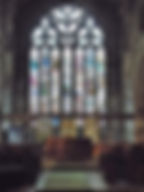
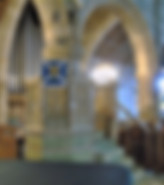
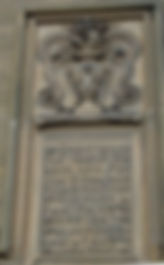
Hôtel de ville de St Andrews
Jardins de la Reine
Saint André
KY16 9TA
Écosse

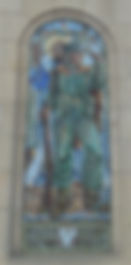
Hôtel de ville de St Andrews érigé en 1858 à des fins municipales et publiques
Sir Hugh Playfair Provost.
Soldat polonais St Andrews Memorial
Robert Burns Club Plaque
South Street St Andrews
St Andrews Burns Club Plaque
Can be found on what was the Royal Hotel where the club was founded
on 25th January 1869.
13 in the Robert Burns World Federation
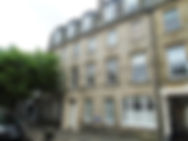


Statue de Hamish McHamish
Allée des Loges
Saint André
KY16 9NL
Écosse

Hamish McHamish était un chat roux (âgé de 15 ans) qui vivait à St Andrews en Écosse.
Il est devenu une star internationale lorsqu'un livre intitulé Hamish McHamish of St Andrews: Cool Cat About Town a été publié. Hamish, une star des réseaux sociaux avec sa propre page Facebook https://www.facebook.com/HamishMcHamishOfStAndrews et son compte Twitter @Hamish_McHamish. Un chat nomade dont s'occupaient de nombreux habitants de St Andrews. Autrefois propriété de Marianne Baird.
Bailie Bell's House and Foundry
South Street St Andrews

In 1620 Edward Raban came to
St Andrews and set up a printing press in a building on the corner of North Street and Church Street.
This was later demolished by Bailie Bell in 1740 so he could build his house. This house is where his son was born in 1753 (Andrew). Andrew was to found Madras College and the "monitorial system" of education.
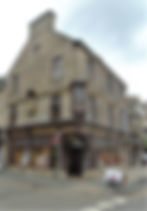
Royal Coat of Arms Tablet
South Street St Andrews
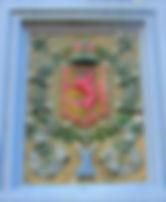
George Martine de Claremont
Georges Martine de Claremont 1635 -1712
A vécu dans South Street Il était avocat-commissaire de St Andrews et auteur de la Première histoire de l'Archevêché :- "Reliquiae Divi Andreae"

George Martine FRS 1700 - 1741
George était un médecin, chirurgien et géologue, qui a vécu plus tard au 56 South Street. Il a été le premier à faire une étude minutieuse de la chaleur et des échelles de température, et a fait la première estimation -400F, de la température du zéro absolu, Il a fabriqué le premier thermomètre clinique à mercure utile en verre. C'est ici qu'en 1730, il a effectué la première trachéotomie en Grande-Bretagne
James David Forbes House
South Street St Andrews
James David Forbes was born in Edinburgh 20 April 1809
at 86 George Street.
He was educated at Edinburgh University in 1825. At 19, became a fellow of the Royal Society of Edinburgh, and in 1832
he was elected to the
Royal Society of London.
In 1859 he was appointed successor to David Brewster as principal of the United College of St Andrews, which he held until his death in 1868. It could be said he was first to study the heating of the earth.


James Boswell et Samuel Johnson
C'est le site du Glass Inn 29 South Street où Boswell et le Dr Johnson ont dîné le 18 août 1773.
Nous avons eu une route morne dans une nuit sombre à St Andrews où nous sommes arrivés tard. Nous avons trouvé un bon souper au Glass's Inn.
Le Glass Inn a survécu vers 1830

Saint André
Attractions
Cathédrale Saint-André
Les pendules
Saint André
KY16 9QL
Écosse
Château de St Andrews
Les partitions
Saint André
KY16 9AR
Écosse
Église de la Sainte-Trinité
Lieux de Sainte-Marie
Saint André
KY16 9UY
Écosse
Le port ouest
rue Sud
Saint André
KY16 9EG
Écosse
Statue de Hamish McHamish
Allée des Loges
Saint André
KY16 9NL
Écosse
Chapelle des Blackfriars
Maison de Madras
rue Sud
Saint André
KY16 9EH
Écosse
Statue de l'évêque Wardlaw
Quadrilatère Sainte-Marie
Saint André
Écosse
Église paroissiale de Kingsbarns
Rue principale
Kingsbarns
Saint André
KY16 8SS
Écosse
Hôtel de ville de St Andrews
Jardins de la Reine
Saint André
KY16 9TA
Écosse
Tombe de Tom Morris
Les pendules
Saint André
KY16 9RG
Tour St Règles
Saint André
KY16 9QZ
Musée Bell Pettigrew
Bâtiments médicaux de Bute
École de biologie
Terrasse de la Reine
Saint André
KY16 9TS
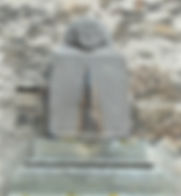
celui de James Grégoire
Ligne méridienne
rue Sud Saint André Ecosse James Gregory a été le premier professeur regius de mathématiques.
Il a posé un méridien en 1748. Lui et deux autres ont été les fondateurs du calcul.
Il a inventé le télescope grégorien


